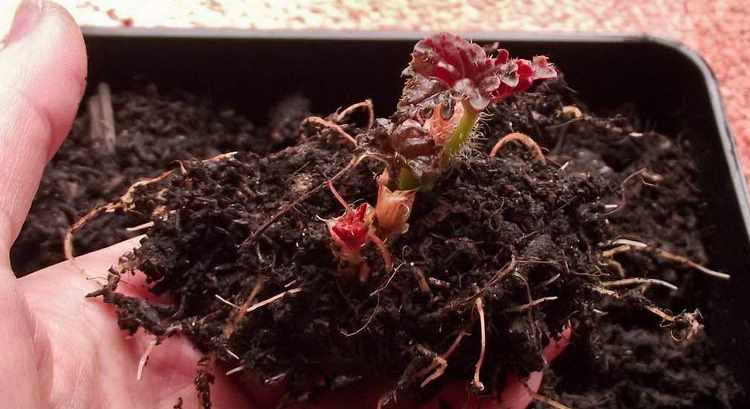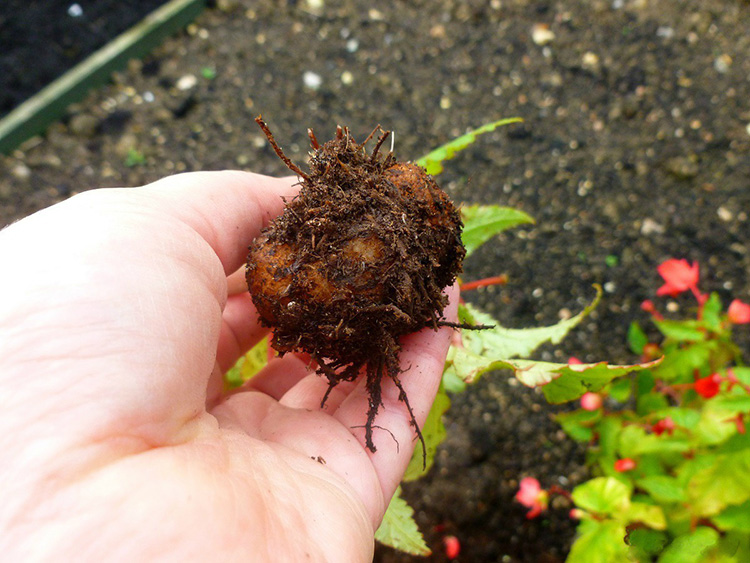Planting Your Begonias

Use large, top-quality, disease-free tubers.
Use a shallow tray filled with Lois’ Right Balance Potting Soil, and set the tubers halfway into the mixture with the concave side upwards. Tubers can also be potted individually in small containers.
The tubers should be planted as closely as possible without touching each other. If planted individually, the container should be just slightly larger than the tuber. (Begonias have extremely small root systems and must be rooted completely to the edge of the container before being transplanted into a larger container.)
Starting the Root System
Place the tray in a warm, bright location. Temperatures should range from 21?–26? C and not fall below 17? C. Bottom heat will cause quicker rooting; placing the tray on top of the refrigerator works well.
Keep the soil moist, but not wet, until new growth appears (5–6 weeks).
Do not let any water sit inside the hollow of the tuber or it may rot.
Maintain high humidity around the tubers by covering the tray with a clear plastic tent.
Once new shoots sprout from the centre of the tuber, begin fertilizing with Lois" Growing Season 20-20-20 every 2 weeks.

Transplanting and Later Care
When shoots are 5 cm tall, the tubers can be transplanted into a container no larger than 8–10 cm in diameter. Do not transplant into a larger pot until tubers are well-rooted to the edges of the original pot.
Fertilize with Growing Season 20-20-20 every 2 weeks.
Allow the soil mixture to dry slightly between waterings.
Give your begonias bright, filtered light in the house.
Transplant outdoors about 3 weeks after the last average spring frost. Choose a shady to semi-shady location in the garden.
Special Problems
- White, powdery spots: powdery mildew disease. Remove diseased leaves and spray remaining foliage with sulphur or funginex. Avoid overhead overwatering and improve air circulation.
- Flower buds drop: usually low light; could also be dry air or underwatering.
- Yellow leaves: too little light; lack of fertilizer.
- Leaves with brown tips: humidity too low.
- Pale, rotting leaves: overwatering.
